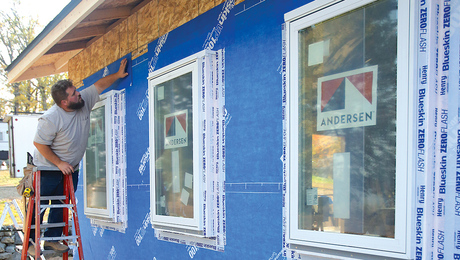Soil is not a solid mass; rather, water and air are present between the soil particles. If excessive water is present, the soil particles will not bond; too little water causes soil particles to resist adherence. To ensure soil compaction meets project specifications, the optimum moisture content of soil must be determined during the testing process
Soil’s moisture content varies based on geographical location and soil type. The optimum moisture for a given soil type is established in a laboratory setting. A series of soil samples are compacted at different moisture contents, beginning somewhere below the optimum moisture point. A curve is then plotted on a graph comparing the soil density at the different moisture levels.
Moisture content affects various soils differently. For example, granular soils have a wider tolerance to changes in the moisture content, while soils high in silt or clay content tend to be more sensitive to the range of moisture content.
The optimum moisture content is the highest point on the curve that maximum density of the tested soil has reached. Because of the uncontrolled nature of a construction jobsite, this density cannot be reproduced 100% as it can in a laboratory setting. A 5% margin of error is generally allowed.



















Replies
Please release Johnny you imposter!
A Great Place for Information, Comraderie, and a Sucker Punch.
Remodeling Contractor just outside the Glass City.
http://www.quittintime.com/
Sounds right to me. Can I ask why you posted this?
Is this from another post? Just wondering.
Will Rogers
I,m going some where but I,m working at the same time
I was just wondering. Soil compaction is one of those things most people don't think about.
"There are three kinds of men: The one that learns by reading, the few who learn by observation and the rest of them have to pee on the electric fence for themselves."Will Rogers
<<Soil compaction is one of those things most people don't think about.>>It shows, big time, when road repairs, municipal sewer projects or any other project is done by the lowest bidder and inspected and supervised by our city public works department or the Authority in charge.I have photos of my neighbors sewer tap-in that pulled itself apart at a bell joint when the main line settled because the compaction was so poor (non-existent). Also, every tap-in lateral, at every house, has settled enough to cause a dip in the new pavement, some severe enough to rattle your teeth when you hit it at normal speed.
i do... think about it... but then... oh well... i found it interesting... but it had to have been cut & pasted... that was not brownbags type'n <g>
p
Can you explain why some of my soils designs call for 105% of modified Proctor? How do you more than 100% of something?
"Put your creed in your deed." Emerson
"When asked if you can do something, tell'em "Why certainly I can", then get busy and find a way to do it." T. Roosevelt
My wife has spent way more than 100% of my money, ask her.
Proctor tests are done using a specified (ASTM standard) compaction energy. There isn't anything particulary special about the energy level, it's more important that it's a standard "baseline" energy.
In a Standard Proctor, for example, the lab sample is compacted in three layers of equal thickness, each layer getting 27 blows from a 2.5 kg hammer than falls 300 mm. Plotting the results (dry density vs. water content), the peak is the Standard Proctor Maximum Dry Density (SPMDD).
In reality, the compaction equipment can apply more energy than is used in the Standard Proctor. Hence, you can get more than 100% of Standard Proctor (assuming you have the water content dialed in).
The same goes for the Modified Proctor. The Modified Proctor was developed for airport runways and uses a higher compaction energy than the Standard Proctor (heavier hammer, greater drop height, compacting the sample in more lifts).
Since it was developed for runways--which have really large dynamic loads--the Modified Proctor isn't used much outside of heavy civil construction. I've never run across a specification calling for more than 100% of Modified Proctor, and I'm a geotechnical (foundation) engineer.
Sorry if the above is a bit long-winded but you posed a good question that deserves a proper answer. Hope this helps.
What happened to the old CBR I learned about as an undergrad engineer?DonDon Reinhard
The Glass Masterworks
"If it scratches, I etch it!"
The California Bearing Ratio (CBR) started off as a quick and rather handy way to assess road subgrades and runways in the 1920s and 1930s, using CBR to design pavement structure. Over time, folks started applying it to everything and forgot that it's a fairly limited test in terms of what it actually tells you. It's still used for low volume roads (gravel roads), but has generally been replaced by other methods for heavy traffic (where there's money to be saved in thinner asphalt or PC concrete layers than the CBR method would indicate).
Cheers,
Peter
Peter: Roughly when did the old faithful CBR start to bite the dust (Pun intended!)? I learned about it in 1958-59.DonDon Reinhard
The Glass Masterworks
"If it scratches, I etch it!"
"has generally been replaced by other methods for heavy traffic (where there's money to be saved in thinner asphalt or PC concrete layers than the CBR method would indicate"
Given how long roads don't last, maybe they should go back to it.
This is a big deal in Florida since most houses are built on fill. They require a compaction certification but I think the test is somewhat superficial. I suppose that is why cracking concrete slabs are a given.